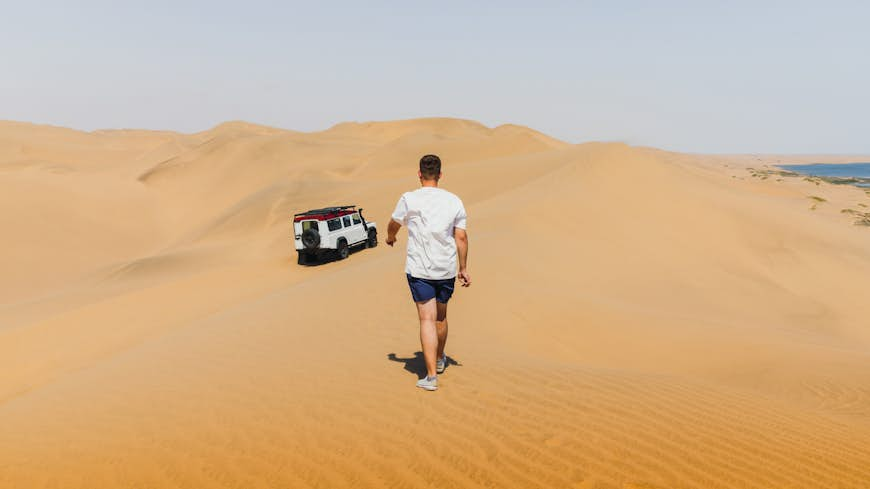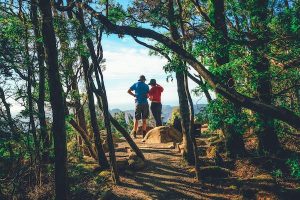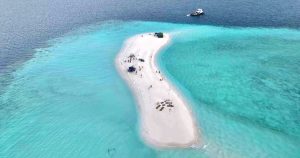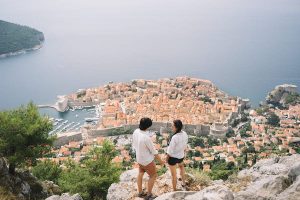
There aren’t many places where you can drive for hours on beautiful, open roads without seeing anything other than the occasional oryx. In Namibia, you’ll be treated to this kind of travel in abundance.
Covering 825,418 sq km (318,695 sq miles), the country is one and a half times bigger than France, and one of the 20 largest nations on the African continent. Just getting around in Namibia is a highlight of any visit, and it adds to the sense of adventure in Namibia.
With the right planning, getting around can also be a big part of the fun of travel in Namibia. Here’s our guide to the best ways to get around.
Explore the planet’s most surprising adventures with our weekly newsletter delivered to your inbox
Take the bus for long-haul trips
Buses are a good budget option for long-haul trips where you want to get from one point to the other without too many stops in between. The South African Intercape line has several routes in Namibia and is generally reliable. A ticket from Windhoek to Noordoewer (on the border with South Africa) costs about N$600; from Windhoek to Oshakati (near the Angolan border), you’ll pay about N$500.
Shared minibuses are the major mode of travel for many Namibians, and they run when full between every major town in the country, with prices varying from N$100 to N$350 for most routes. More comfortable and efficient pre-booked private shuttle services, such as those operated by Welwitschia and Carlo’s Shuttle, connect Windhoek with Swakopmund, Walvis Bay and other major centers. Expect to pay about N$280 for a shuttle between Windhoek and Swakopmund. For all buses and shuttles, arrive early to try to get a seat on the shady side of the vehicle.
 Consider renting a 4WD to explore Namibia’s rugged desert landscapes © Anastasiia Shavshyna / Getty Images
Consider renting a 4WD to explore Namibia’s rugged desert landscapes © Anastasiia Shavshyna / Getty Images
Rent a car or 4WD for the best access and most flexibility
The best way to explore Namibia is by private vehicle. The country has a good network of paved arterial roads and generally well-maintained gravel roads in rural areas. Vehicle rental is straightforward and reasonably priced in Namibia, especially during the off-season. During the high season, from July through October, rental agencies are frequently booked out, so advance reservations are essential.
Expect to pay from about US$550 per week for a mid-sized 2WD vehicle. If you plan to tackle gravel roads, you’ll pay about US$650 per week for a 4WD without camping equipment and from US$750 per week upwards for a 4WD with a rooftop tent and other camping equipment. For self-drive vehicle rentals, in addition to international operators such as Avis, try local companies such as Savanna Car Hire and Safari Car Rental.
Although a 4WD isn’t necessary for most major destinations, renting a vehicle with high clearance is recommended for Namibia’s long stretches of gravel road. When considering insurance coverage and excess charges, keep in mind that gravel is rough on tires, windshields and vehicles. Always fill up when passing a gas station and carry extra drinking water.
Most cars from rental companies are self-drive. If you’d rather let someone else do the driving, it’s possible to arrange camping trips and lodge-based travel packages with tour companies. Expect to pay from US$150 to more than US$400 per day for an organized tour with a driver/guide through a company such as Karibu Namibia.
Travel slowly by train to reach the coast in Namibia
TransNamib’s StarLine train offers a pleasant but slow and often unreliable night service between Windhoek and Walvis Bay (N$170, about 10 hours) and another between Windhoek and Keetmanshoop, the junction for travel between Lüderitz and southern Namibia (N$180, about 12 hours). The country’s other passenger services are currently suspended.
 The best way to appreciate the scale of Namibia’s landscapes is from above © Marco Bottigelli / Getty Images
The best way to appreciate the scale of Namibia’s landscapes is from above © Marco Bottigelli / Getty Images
For stunning aerial views of Namibia’s landscapes, try a flying safari
FlyNamibia provides scheduled and charter flights connecting Windhoek with various destinations around the country. For travelers with bigger budgets, a small handful of companies take advantage of Namibia’s consistently clear skies to run scenic flights, especially in the Sossusvlei area and along the coast. Though there’s a carbon cost, these flights offer beautiful aerial views of Namibia’s landscapes and a unique perspective on the country’s striking juxtaposition of desert and ocean.
Shared taxis are the cheapest option in cities and towns
Uber, Lyft and similar ride-hailing services do not operate in Namibia, but there is a local equivalent: a shared taxi system, which offers an economical way of getting around in Windhoek and other major towns for budget travelers. After hailing a vehicle (all shared taxis are prominently marked), tell the driver your destination before you get in; if the vehicle is heading that way and has space, the driver will take you.
Drivers sometimes take circuitous routes to drop off other passengers, service is to general neighborhoods rather than door-to-door, and driving standards aren’t always the highest. But fares are cheap (between N$12 and N$36 for short journeys) and shared taxis are a good introduction to local life.
Private, non-shared taxis are more efficient and still reasonably priced. Fares start at about N$80 for shorter trips within Windhoek. These taxis are normally booked in advance, rather than hailed, and provide door-to-door service. Ask staff at your accommodations for recommended taxi companies.
Cycling is a great way to explore for self-sufficient travelers
If you’re reasonably fit and can sort out the logistics, Namibia is a rewarding destination for cyclists, with a dynamic local cycling community, challenging terrain and a vast network of mostly empty gravel roads. You’ll need to be highly organized about making water, food and emergency backup plans – the desert heat is not to be fooled around with, and there are few places between larger towns where you can restock or arrange repairs. A pre-arranged bike tour with a company such as Mabaruli is recommended for first-time visitors.
 Kayaking is a great way to get close to wildlife in Namibia © Anastasiia Shavshyna / Getty Images
Kayaking is a great way to get close to wildlife in Namibia © Anastasiia Shavshyna / Getty Images
Kayak along the coast, canoe on the rivers and boat on inland waterways
Sea kayaking and boat tours to spot seals, penguins, flamingos and other coastal life are popular in Walvis Bay and Lüderitz. In northern Namibia, river cruises along the Okavango, Zambezi and Kunene rivers are a relaxing way to appreciate local wildlife and sunsets. In the south, on the Orange River, try a multi-night canoe trip to explore the river’s reaches.
Accessible travel in Namibia
Private vehicle-based travel is the easiest way to get around Namibia if you have limited mobility. Several local companies organize accessible tours, and the minivans and safari vehicles commonly used by Namibia-based tour companies can often accommodate travelers who use wheelchairs. Many lodges also have paved footpaths and rooms that are accessible for wheelchair users.
Some visitors with disabilities recommend traveling with a carer to assist with transport and other logistical needs. Helpful websites include Responsible Travel and Disabled Holidays. For more online resources, download Lonely Planet’s free accessible travel resources.



